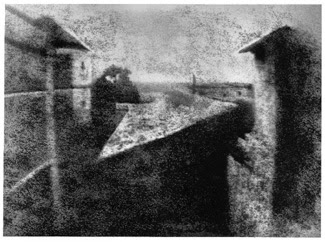The Daguerreotype Camera

The Daguerreotype camera was the first camera to take permanent photographs, back in 1826. It was a man called Joseph Nicéphore Niépce who took the first photograph, using the Daguerreotype camera, which was created by Charles and Vincent Chevalier while In Paris.
The camera itself was a double-box design with a fitted landscape lens attached to the outer box and holder for a ground glass focusing screen plus an image plate, on the inner box. When sliding the inside box, objects at various distances could be brought to as sharp a focus as desired. The screen was replaced with a sensitised plate after a good image had been focused on. There was a knurled wheel that controlled a copper flap in the front of the lens, which functioned as a shutter. The very early Daguerreotype cameras required long exposure times. In 1839, 'long exposure' could be from five to thirty minutes.
One problem about this particular type of camera would have been the length of time it took to create the images and the many, and easy ways that the picture could be distorted. Everything had to remain motionless as the picture was being taken.
Personally I believe that this type of camera would have been incredible in its time, and quite something for the people to behold. Although it was slow at taking images, and the subjects had to remain still, to be the first of its kind would have been something spectacular to behold.
Joseph Nicéphore Niépce, View from the Window at Gras, 1826
Louis Daguerre, The Artist's Studio, 1837, daguerreotype
References
- http://en.wikipedia.org/wiki/Daguerreotype
- http://preserve.harvard.edu/daguerreotypes/
- Google Images


No comments:
Post a Comment